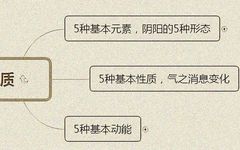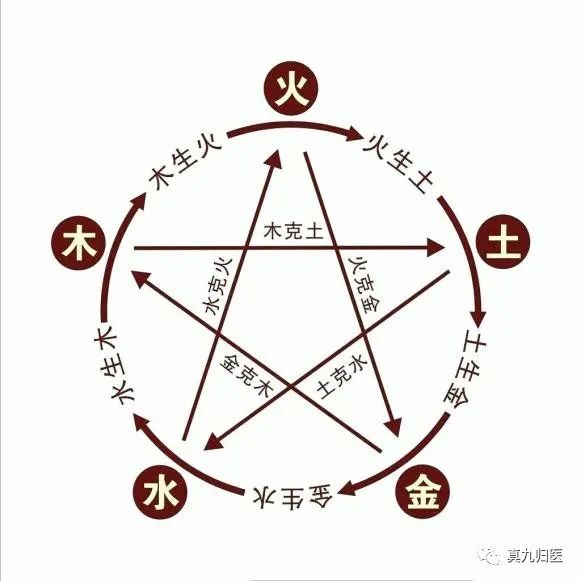
What are the Five Elements?
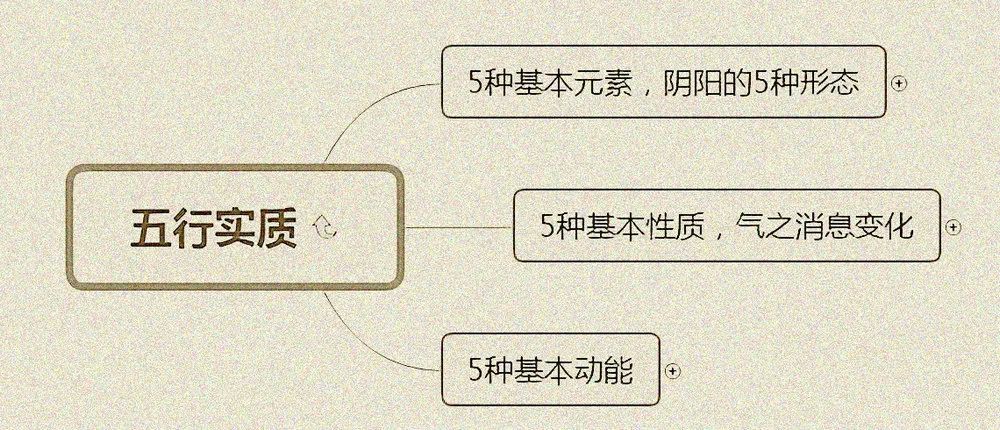
The essence of the Five Elements consists of three aspects.
1. Five basic elements, which belong to the five forms of Yin and Yang.
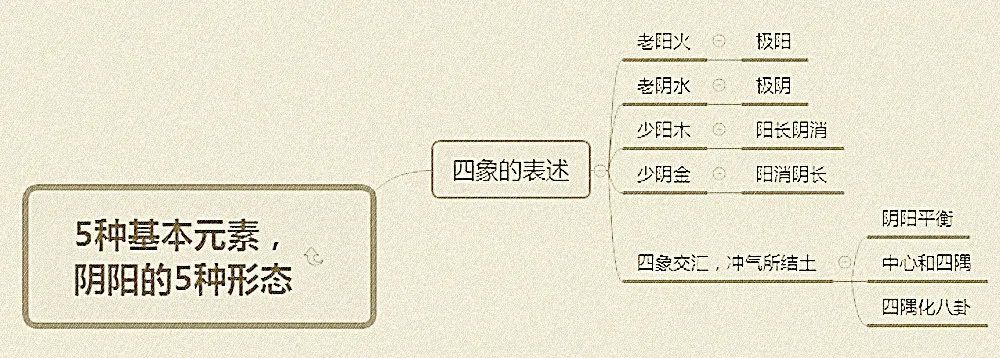
Five Elements and Five Qualities
2. Five basic qualities, the changes of Qi.
(1) How does Yin and Yang transform into the Five Elements?
The sequence and process are clearly described in the River Diagram (He Tu). The summary is as follows:
1. Heaven produces Water
① Water is born from Yang, thus Heaven produces Water, which belongs to the position of the Sun.
② One indicates the first in the order of generation.
First cold, then hot, hence Water is produced first.
2. Earth produces Fire
① Fire is born from Yin, thus Earth produces Fire, which belongs to the position of Shao Yang.
② Two indicates the second in the order of generation.
Where there is Water, there must be Fire; Yin and Yang are mutually rooted and one entity.
3. Heaven produces Wood
① With Water and Fire in harmony, Wood can grow. Wood is responsible for growth, coming from Yang, thus Three belongs to the position of Shao Yin.
② Three also indicates the third in the order of generation.
4. Earth produces Metal
① Wood reaches its peak, and Metal is born from it. Thus, Wood must come before Metal. Metal is introverted, manifesting in Yin, thus Four belongs to the position of Tai Yin.
② Four indicates the fourth in the order of generation.
5. Heaven produces Earth
Water, Fire, Wood, and Metal, the transitional positions of the four Qi, and the middle position of their intersection, will produce a balanced state of Earth. Thus, the order of Earth’s generation is fifth, and its position is in the middle.
(2) The Five Elements are also the five attributes and qualities of Qi.
Therefore, the Five Elements represent the five forms of Yin and Yang, and their material basis is also Qi.
Since they are five material attributes, there must be five attributes and qualities:
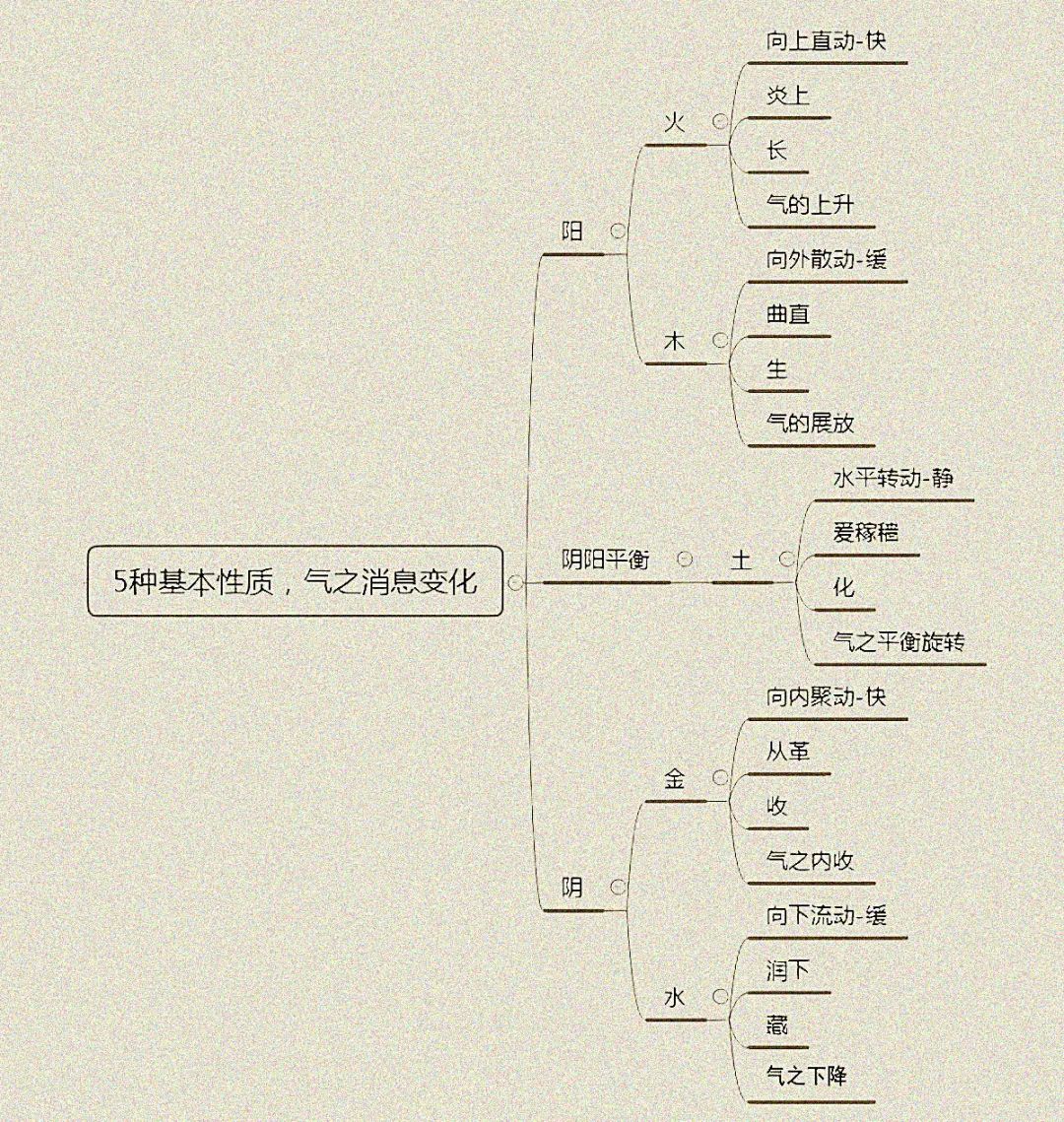
Five Qualities of the Five Elements
(3) The Five Elements are a single Qi, belonging to the changes of Qi.
The changes of Qi can be divided into three situations: Yang; Yin; and the balance of Yin and Yang.
1. Yang includes Fire and Wood.
Fire is characterized by upward movement, and its speed is fast, exhibiting the feature of “flaming up,” indicating the rise of Qi, belonging to “growth.”
Wood is characterized by dispersive movement, with a slower speed, exhibiting the feature of “curved and straight,” indicating the expansion of Qi, belonging to “birth.”
2. Yin includes Metal and Water.
Metal is characterized by inward gathering, which is a converging movement, exhibiting the feature of “from reform,” moving quickly, indicating the inward collection of Qi, belonging to “reception.”
Water is characterized by downward movement, with a slower speed, exhibiting the feature of “moistening down,” indicating the descent of Qi, belonging to “storage.”
3. The balance of Yin and Yang includes Earth.
Earth is characterized by horizontal rotation, appearing balanced externally (internal movement, external stillness), exhibiting the features of “cultivation and growth,” indicating the balance of Qi, belonging to “transformation.”
The five qualities of the Five Elements are crucial; they form the basis for the expansion of the Five Elements and the relationships of generation and overcoming.
Three Basic Energies of the Five Elements
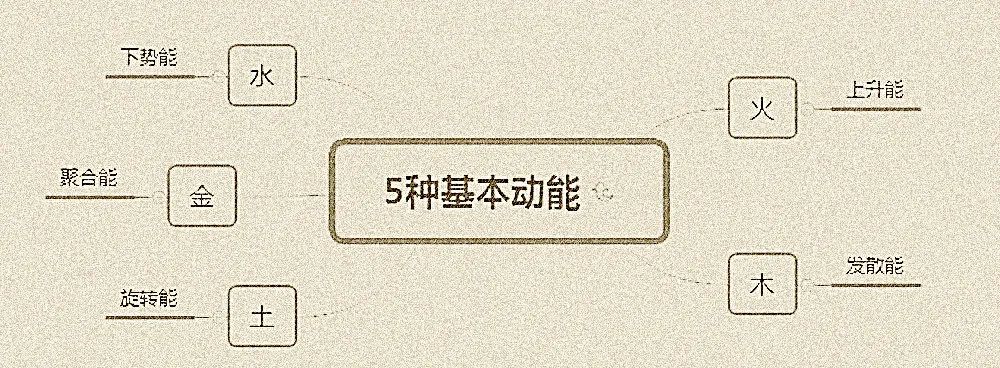
Five Energies of the Five Elements
The Five Elements represent the five forms of Yin and Yang, possessing five types of energy.
1. Fire, the energy of ascent.
2. Wood, the energy of projection.
3. Earth, the energy of rotation.
4. Metal, the energy of aggregation.
5. Water, the energy of descent.
The above describes the essence of the Five Elements; they are five types of material with various energies and qualities, and they also serve as abstract philosophical symbols.
The Relationships of Generation, Overcoming, Multiplying, and Insulting among the Five Elements
The relationships among the Five Elements indicate the direction of movement and the forms of energy transformation. They can be divided into two states:
1. Balanced State
This includes generation and overcoming. It is essential to understand that generation and overcoming are key to maintaining the balance of Yin and Yang; both are “good.”
2. Abnormal State
This includes multiplying and insulting. At this point, balance has been lost, and they are considered “bad.”
For specific relationships, see the diagram:
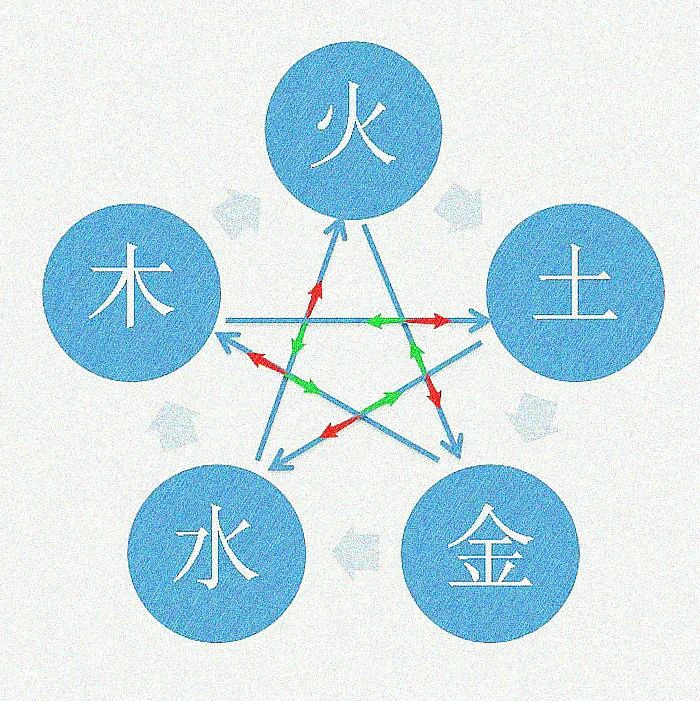
Diagram of the Relationships among the Five Elements
The diagram includes all relationships; the arrows on the outer circle indicate generation, the intersecting blue arrows indicate overcoming; the red arrows indicate multiplying, and the green arrows indicate insulting. The direction of the arrows indicates the direction of the relationships. The specific relationships are shown in the diagram below:
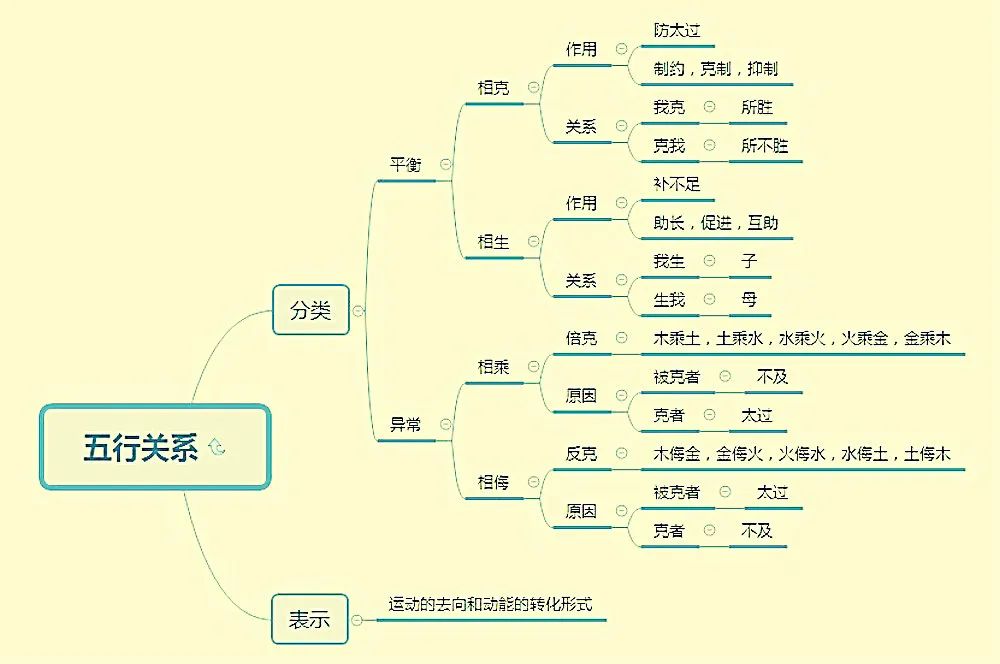
Relationships among the Five Elements
3. The Relationships of Generation, Overcoming, Multiplying, and Insulting among the Five Elements
1. Generation among the Five Elements
Generation means mutual assistance, promotion, and support, aimed at compensating for deficiencies.
The order of generation is: Earth generates Metal, Metal generates Water, Water generates Wood, Wood generates Fire, and Fire generates Earth, forming a closed loop.
The relationships of generation include “I generate (child)” and “generate me (mother)”; for example:
Earth generates Metal, in relation to Metal: Earth is “generate me (mother),” and Water is “I generate (child).” Each element has both “I generate” and “generate me,” and the rest follow suit.
2. Overcoming among the Five Elements
Overcoming means mutual restraint, limitation, and control, aimed at preventing excess.
The order of overcoming is: Earth overcomes Water, Water overcomes Fire, Fire overcomes Metal, Metal overcomes Wood, and Wood overcomes Earth, also forming a closed loop.
The relationships of overcoming include “I overcome (the one being defeated)” and “overcome me (the one not being defeated)”; for example:
Earth overcomes Water, in relation to Water: “I overcome (the one being defeated)” is Fire, and “overcome me (the one not being defeated)” is Earth, and the rest follow suit.
Both generation and overcoming are means of maintaining the balance of Yin and Yang. The “Classics of Changes” states: “The mechanism of creation cannot be without generation, nor can it be without restraint. Without generation, there is no growth; without restraint, there is excess and harm. Multiplying and insulting belong to the imbalance of Yin and Yang.
3. Multiplying among the Five Elements
Multiplying means doubling the overcoming, indicating an offensive action, thus belonging to the imbalance of Yin and Yang.
The order of multiplying is consistent with that of overcoming, so the red arrows in the diagram align with the direction of the overcoming arrows. The specific order is as follows: Wood multiplies Earth, Earth multiplies Water, Water multiplies Fire, Fire multiplies Metal, and Metal multiplies Wood.
The reasons for overcoming can be twofold: the one being overcome is insufficient, or the one overcoming is excessive; for example:
Earth overcomes Water; if Water (the one being overcome) is insufficient, Earth (the one overcoming) will multiply it, thus doubling the overcoming, hence called: Earth multiplies Water; if Water is normal, and Earth is excessive, Earth will also double the overcoming of Water. The rest follow suit.
Thus, the weak are preyed upon by the strong, which is the law of nature.
4. Insulting among the Five Elements
Insulting means counter-overcoming, indicating a reversal of control. The aim becomes “turning the tables” and is defensive, also belonging to the imbalance of Yin and Yang.
The order of insulting is the reverse of that of overcoming, thus the green arrows in the diagram indicate the reverse direction. The specific order is as follows: Wood insults Metal, Metal insults Fire, Fire insults Water, Water insults Earth, and Earth insults Wood.
The reasons for insulting can also be twofold: the one being overcome is excessive, or the one overcoming is insufficient. For example:
Earth overcomes Water; if Water (the one being overcome) is excessive, Water (the one being overcome) will counter-insult Earth, called Water insults Earth, meaning A attacks B, and B counterattacks A because B is too strong.
If Earth (the one overcoming) is insufficient, Water (the one being overcome) will also counter-insult Earth, also called Water insults Earth, meaning A attacks B, and B counterattacks A because A is too weak.
Notice that both multiplying and insulting are relationships along the overcoming route. Moreover, the reasons for multiplying and insulting are reversed. If we consider A overcoming B, multiplying means A is excessive and B is insufficient (the direction of overcoming), while insulting means A is insufficient and B is excessive (the reverse direction of overcoming).
Additionally, there are two other relationships of Yin and Yang imbalance:
5. Excessive Generation
For example, Water generates Wood, and if Wood is generated excessively, it will lead to: 1. The Fire generated by Wood is also excessive. 2. Wood multiplies Earth. 3. Wood insults Metal.
6. Insufficient Generation
For example, if Water generates Wood, and if Water is insufficient to generate Wood, it will lead to: 1. The Fire generated by Wood is also insufficient. 2. Metal multiplies Wood. 3. Earth insults Wood.
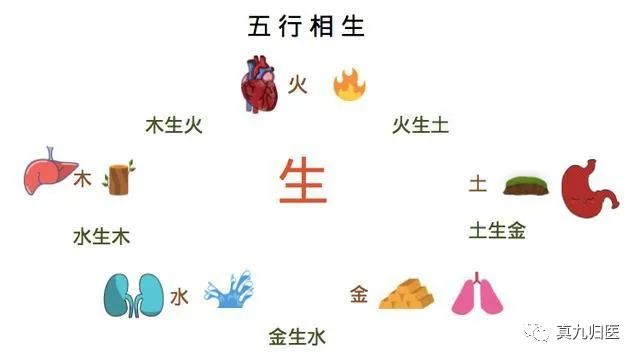
The Relationship between the Five Elements and Qi
The Five Elements represent different stages and states of Qi; they are the changes of Qi.
From a conceptual perspective: Qi is chaotic, formless, and intangible, making it difficult to understand directly, thus it is divided into Yin and Yang for understanding. However, merely dividing into Yin and Yang is still too vague, so it is further divided into the Five Elements for better understanding. Therefore, studying the Five Elements is beneficial for understanding Qi.
The Relationship between the Five Elements and the Four Images
The Four Images also arise from the generation of Yin and Yang, but they do not consider the transitional stages of generation, meaning they do not include “Earth.” The specific correspondence is:
Fire → Sun; Wood → Shao Yang; Metal → Shao Yin; Water → Tai Yin.
The Five Elements and the Eight Trigrams
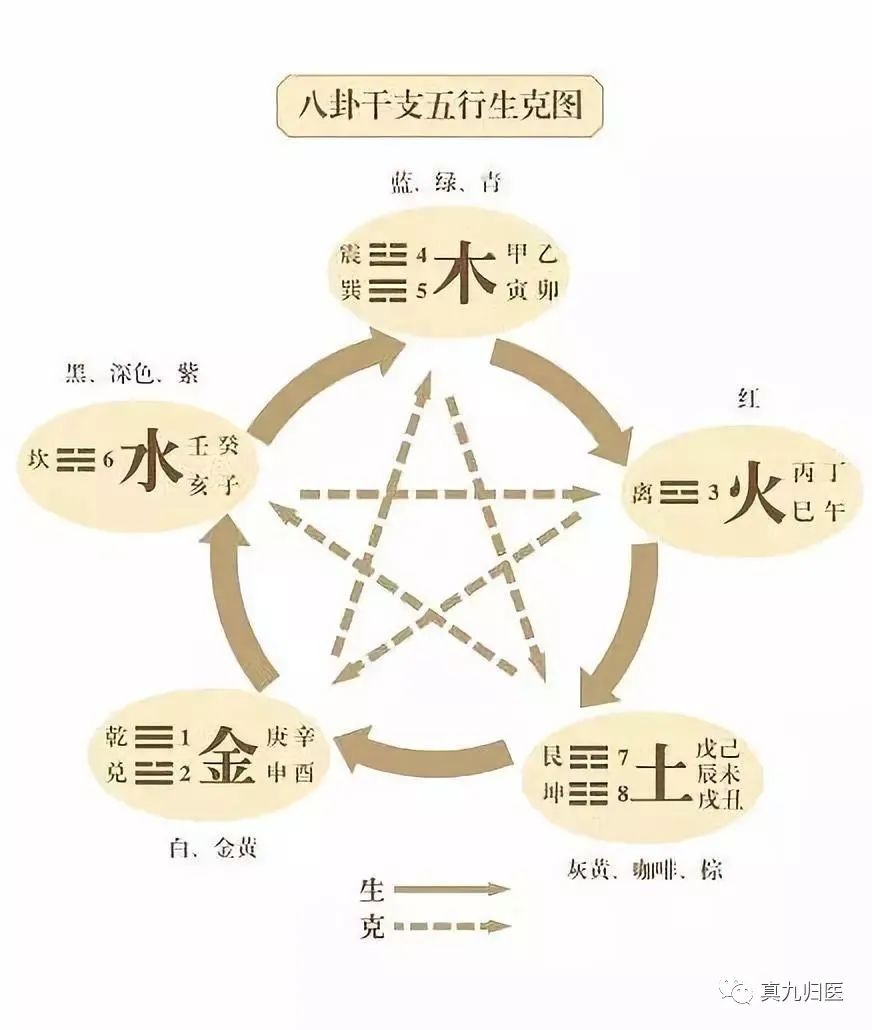
The Five Elements do not have a clear direct relationship with the Pre-Heaven Eight Trigrams. The Five Elements correspond to the velocity in the equation s = v*t, which relates to both (distance, space) and (time). The Pre-Heaven Eight Trigrams describe the rise of Yang and the descent of Yin in the generation of Heaven and Earth, focusing on the direct transformation of Yin and Yang into the Four Images and Eight Trigrams, expressing the continuous cycle of life without clear overcoming relationships. Therefore, there is no need to directly match them with the Five Elements. However, if one wishes to correspond them, it is entirely possible, as they are both manifestations of Yin and Yang.
On the other hand, the Post-Heaven Eight Trigrams encompass both time and space, exhibiting both generation and overcoming, thus they can correspond well with the Five Elements. Their correspondence is based on the relationship of time and position.
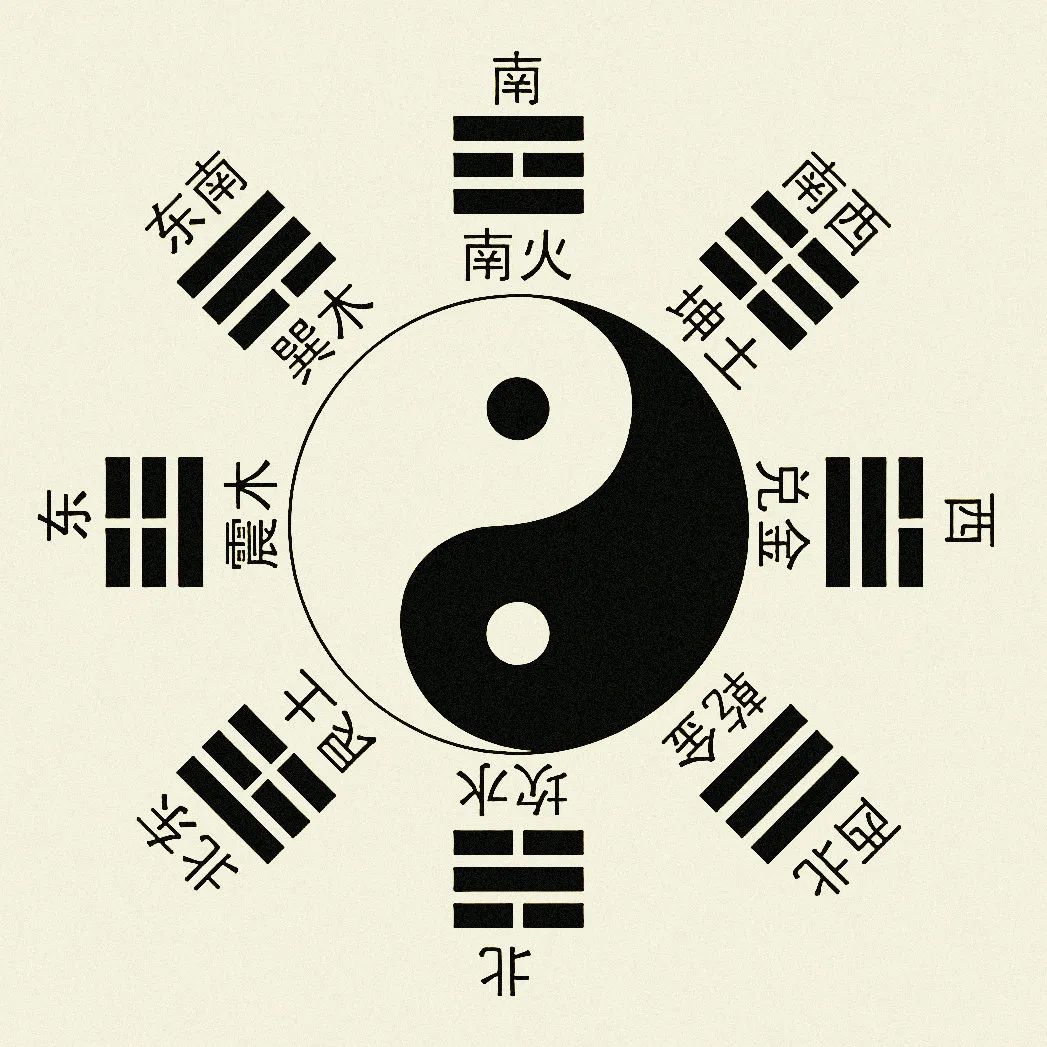
Post-Heaven Eight Trigrams and Five Elements Diagram
For example, in the Post-Heaven Eight Trigrams, Zhen belongs to the East, corresponding to Spring, while the Five Elements indicate that Wood belongs to the East, corresponding to Spring. Thus, Zhen corresponds to Wood. The rest follow suit.
Why are there two Earths, two Woods, and two Metals, but only one Fire and one Water?
Because of the qualitative and quantitative changes of Yin and Yang.
The transition from Zhen Wood to Xun Wood represents a quantitative change of Wood; during this stage, Yang energy increases, and although the dispersive movement accelerates, it has not yet reached the temperature of “flaming up,” still remaining Wood.
The transition from Dui Metal to Qian Metal represents a quantitative change of Metal; during this stage, Yin energy increases, and although the converging movement slows down, it has not yet transformed into the characteristics of moistening down, thus still remaining Metal.
However, Kun Earth and Gen Earth represent two stages of qualitative change of Yin and Yang. Kun Earth is Yin, representing moist earth, thus close to Li Fire; Fire warms moist earth, producing Dui Metal. Gen Earth is Yang, representing dry earth, thus close to Kan Water; Water moistens earth, producing Wood.
The Five Elements and the Heavenly Stems and Earthly Branches
The Five Elements are also divided into Yin and Yang, further refined into the Ten Heavenly Stems.
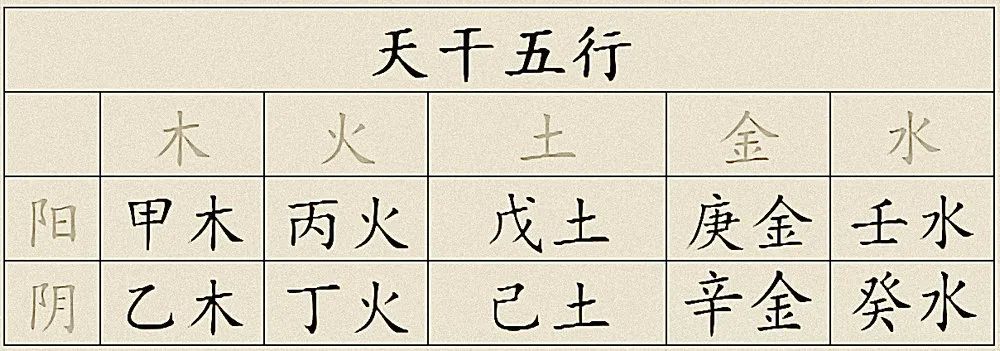
Heavenly Stems and Five Elements
The Earthly Branches can also be divided into the Five Elements, as shown in the diagram:
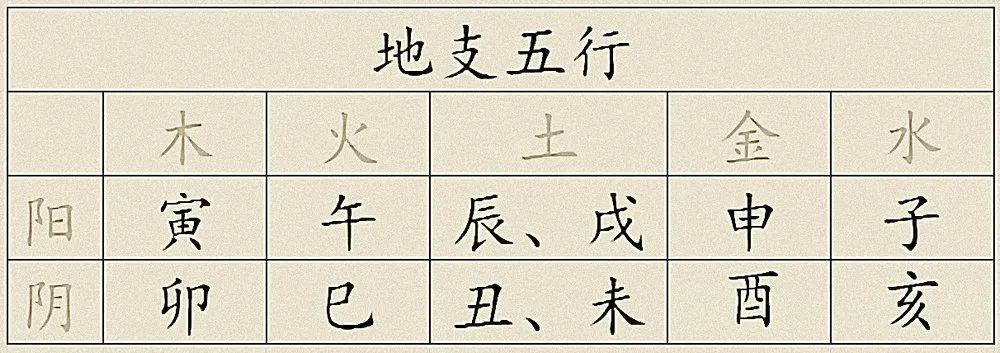
Earthly Branches and Five Elements
Na Yin Five Elements
The Na Yin Five Elements of the Heavenly Stems have their own Five Elements, and the Earthly Branches have their own Five Elements. When the Heavenly Stems and Earthly Branches combine, they transform into new Five Elements, known as “Na Yin Five Elements.”
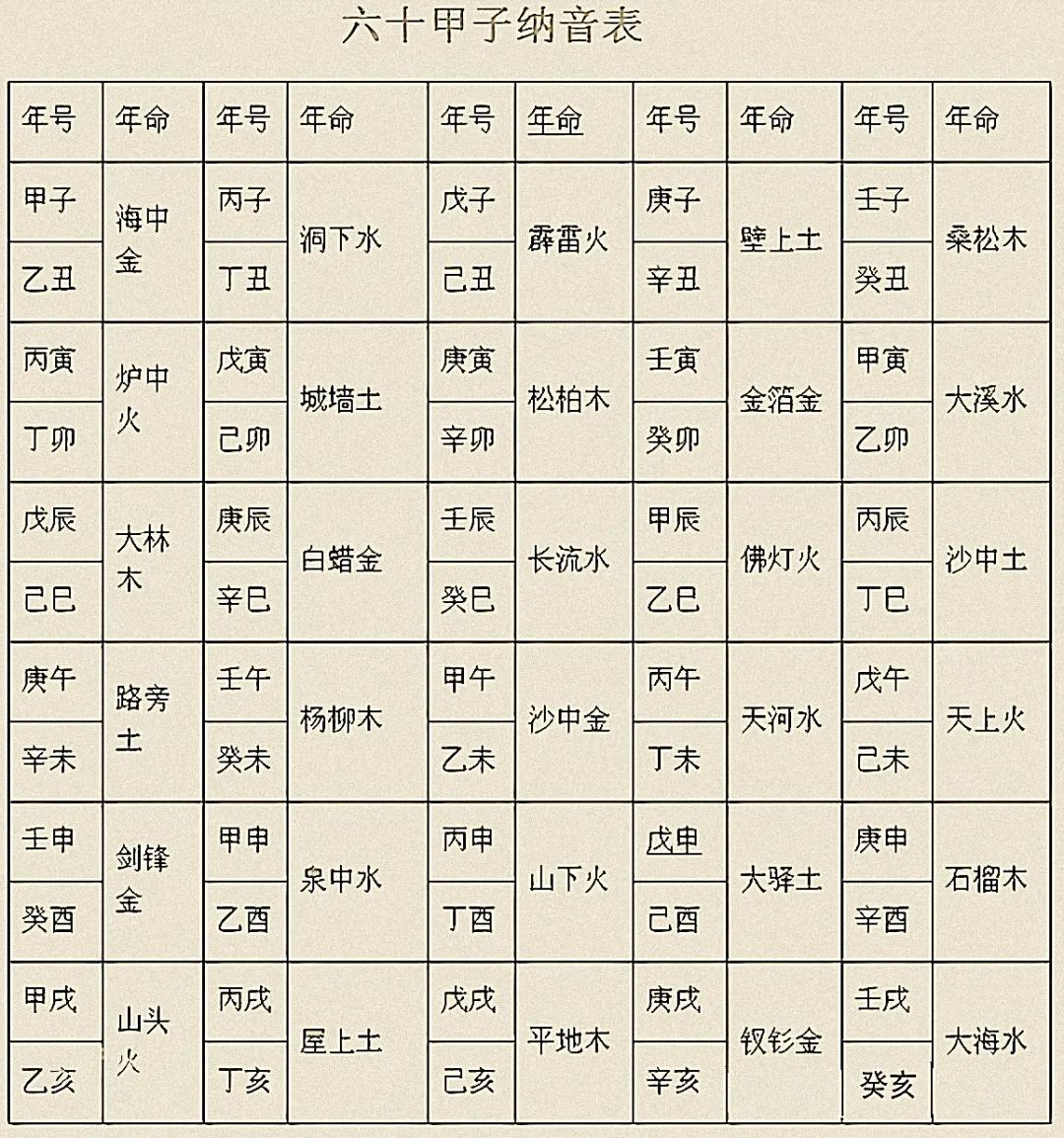
Na Yin Five Elements
The Five Elements and the Five Qi and Five Colors
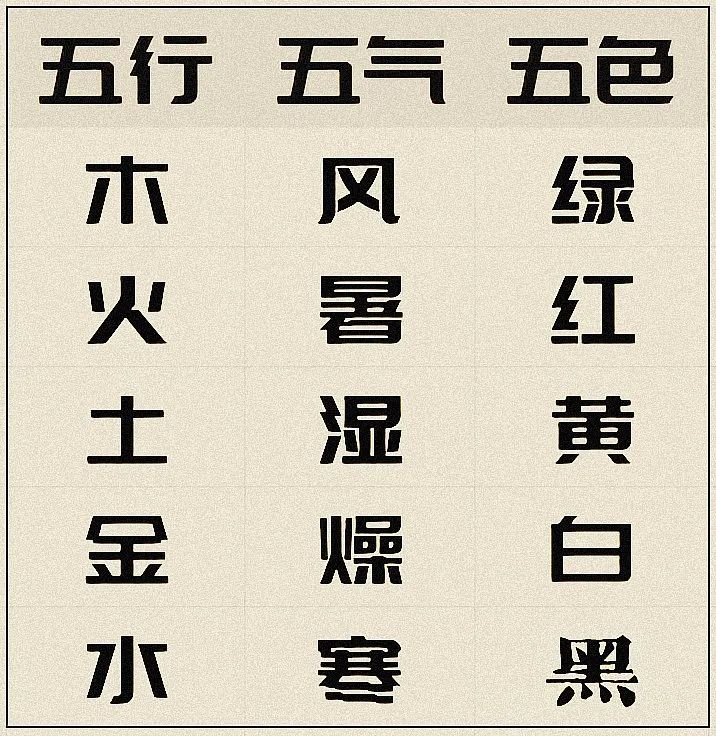
The Five Elements and the Five Qi and Five Colors
The Five Elements and the Five Organs and Six Bowels
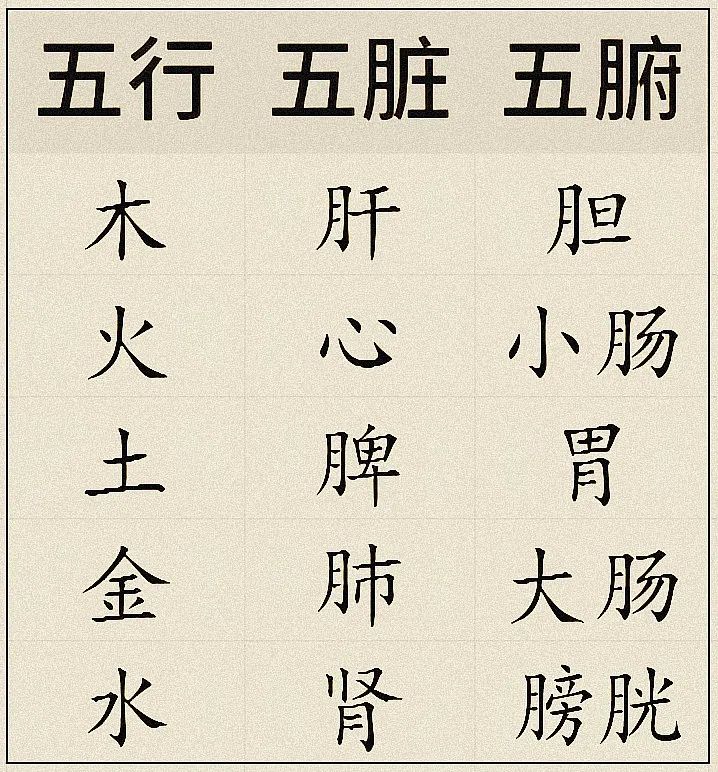
The Five Elements and the Five Organs and Six Bowels
Some friends say that in the Five Elements, Fire is divided into Jun Fire and Xiang Fire, thus there are actually six types of Qi: Wood Qi, Jun Fire Qi, Xiang Fire Qi, Metal Qi, Earth Qi, and Water Qi, which is a perspective developed in Traditional Chinese Medicine.
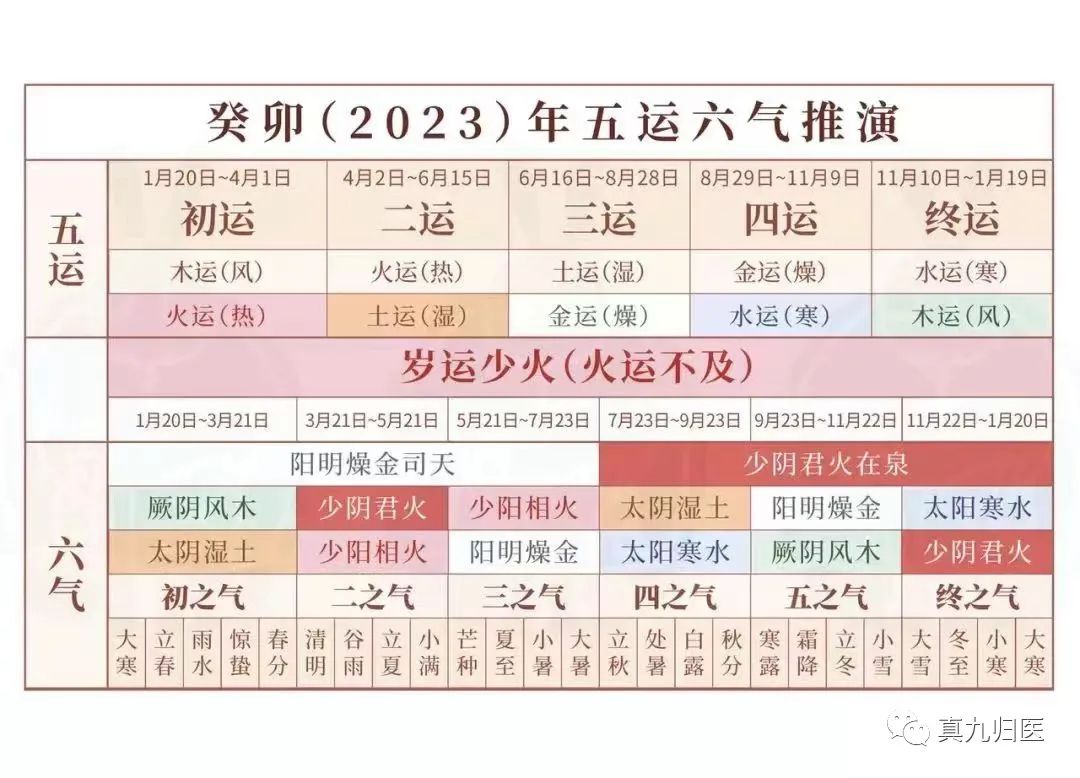
For group discussions, please add WeChat: indicate Five Movements and Six Qi
Recommended Reading
-
Starting from the Five Movements and Six Qi: A Quick Entry into Traditional Chinese Medicine
-
The Source of Diseases: “Resentment, Hatred, Anger, Irritation, Frustration”
-
Marks on the Tongue: Be Careful of “Liver Blockage!”
-
The Qi in Traditional Chinese Medicine is Closely Related to Diet; How to Manage This “Qi!”


